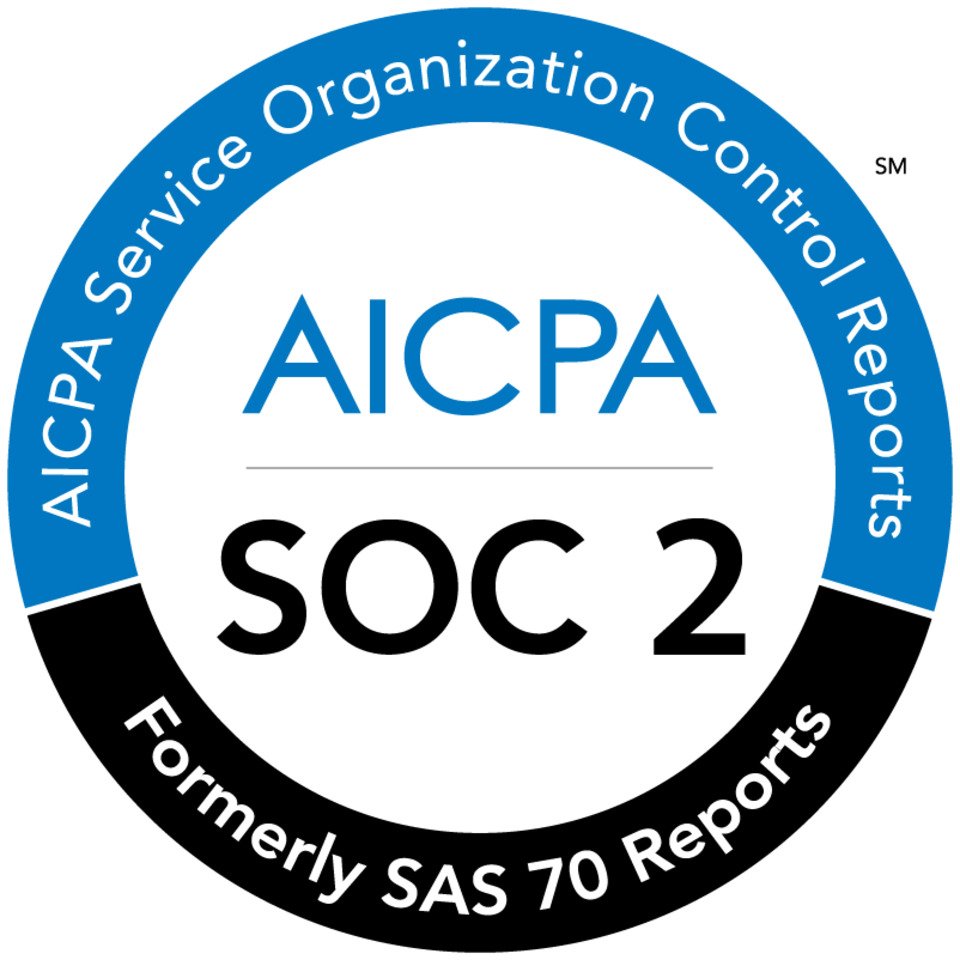AI-Powered Credit Scoring & Risk Evaluation
We partner with industry leaders



Industries That Benefit
Banking Institutions
Retail and commercial banks face significant pressure to expand lending while maintaining portfolio quality and satisfying regulatory requirements. Traditional scoring approaches exclude 20-30% of potentially profitable borrowers while providing limited risk differentiation within conventional segments. Regulatory scrutiny around fair lending practices demands transparent, explainable risk assessment methodologies. Competition from fintech lenders requires more sophisticated evaluation of non-traditional borrowers. Legacy underwriting systems struggle to incorporate alternative data sources and behavioral patterns.
Our credit risk solutions deliver:
- 25-35% increase in approval rates for qualified applicants
- Consistent risk-based pricing across all borrower segments
- Full regulatory compliance with fair lending requirements
- Enhanced competitive position in contested markets
Wealth & Asset Management
Wealth management firms increasingly offer credit facilities, securities lending, and margin financing to high-net-worth clients requiring sophisticated risk assessment. Traditional credit evaluation fails to capture the complexity of wealthy clients’ financial profiles and asset structures. Collateral-based lending demands advanced valuation and risk modeling across diverse asset classes. Regulatory requirements for margin lending and securities-based lending create compliance challenges. Client expectations for rapid credit decisions conflict with comprehensive risk evaluation needs.
Wealth managers gain:
- Sophisticated risk assessment for complex client financial profiles
- Advanced collateral valuation across diverse asset classes
- Rapid credit decisions maintaining portfolio quality standards
- Regulatory compliance for securities-based lending activities
Investment Firms
Investment managers need accurate risk assessment for private credit, venture investments, and alternative assets where conventional metrics provide limited guidance. Traditional evaluation approaches miss critical risk factors in these specialized investment categories. Portfolio companies require ongoing credit risk monitoring for bridge financing and growth capital. Fund-level credit facilities demand sophisticated risk assessment incorporating portfolio performance. Due diligence processes require quantitative risk validation beyond traditional credit metrics.
Investment teams receive:
- Comprehensive risk intelligence for non-traditional investments
- Pattern identification across diverse portfolio companies
- Early warning indicators of potential defaults
- Quantitative support for investment committee decisions
Fintech Companies
Digital lending platforms require advanced risk assessment to evaluate non-traditional borrowers accurately while scaling operations efficiently. These companies often target underserved segments where conventional scoring provides limited predictive value. Rapid growth demands automated decisioning capabilities without sacrificing portfolio quality. Alternative data sources require sophisticated integration and modeling approaches. Regulatory expectations for explainable AI create compliance challenges for machine learning models.
Fintech operators gain:
- Precise risk assessment for thin-file and new-to-credit applicants
- 40-50% reduction in manual review requirements
- Automated decisioning for 80-90% of applications
- Scalable underwriting that maintains quality during growth
Capital Markets & Trading
Trading organizations provide margin financing and securities lending requiring real-time risk assessment and dynamic position monitoring. Traditional credit models fail to capture the volatility and complexity of trading account risks. Margin requirements demand sophisticated collateral valuation and stress testing capabilities. Prime brokerage services require advanced risk assessment for institutional clients. Regulatory capital calculations depend on accurate risk modeling across diverse positions.
Trading firms benefit from:
- Real-time risk assessment for margin and securities lending
- Dynamic collateral valuation across diverse securities
- Advanced stress testing for regulatory capital calculations
- Sophisticated risk monitoring for institutional prime brokerage
Insurance & Risk Providers
Insurance companies face increasing demand for credit-related insurance products including credit protection and loan default coverage. Traditional risk assessment approaches inadequately evaluate insurance applicants’ creditworthiness and default probability. Commercial lending insurance requires sophisticated portfolio risk modeling. Regulatory requirements for insurance reserves demand accurate credit loss projections. Cross-selling opportunities depend on comprehensive customer financial profiling.
Insurance organizations achieve:
- Advanced credit risk assessment for insurance product underwriting
- Portfolio risk modeling for credit-related insurance products
- Accurate loss projections for regulatory reserve calculations
- Comprehensive customer profiling for cross-selling opportunities
Crowdfunding & Alternative Finance
Alternative finance platforms must evaluate diverse borrower and investment profiles across non-traditional lending and investment products. Conventional credit scoring inadequately addresses peer-to-peer lending, invoice financing, and asset-based lending. Platform risk management requires sophisticated borrower evaluation and portfolio monitoring. Regulatory compliance demands transparent, fair credit assessment methodologies. Investor protection requires accurate risk disclosure and default probability estimation.
Platform operators receive:
- Tailored risk assessment for alternative finance products
- Portfolio risk monitoring across diverse lending categories
- Regulatory-compliant risk evaluation and disclosure
- Sophisticated default probability modeling for investor protection
Corporate Finance & Treasury Divisions
Corporate treasury departments must assess counterparty credit risk for banking relationships, investment decisions, and trade finance activities. Traditional credit evaluation inadequately addresses complex corporate risk profiles and cross-border transactions. Treasury investment decisions require sophisticated credit analysis for bond portfolios and money market instruments. Supply chain financing demands advanced risk assessment of vendors and partners. Working capital optimization requires credit evaluation of customers and suppliers.
Treasury operations gain:
- Comprehensive counterparty risk assessment for banking relationships
- Advanced credit analysis for treasury investment portfolios
- Sophisticated vendor and supplier credit evaluation
- Customer credit assessment for working capital optimization
Problems or Missed Opportunities We Solve
Market Exclusion Through Limited Evaluation
Traditional credit scoring excludes approximately 50 million US adults and billions globally who lack conventional credit histories. Financial institutions using only traditional assessment miss substantial profitable segments and growth opportunities.
Our approach:
- Accurately evaluates thin-file and credit-invisible applicants
- Identifies qualified borrowers conventional methods reject
- Expands addressable market by 30-40% for most lenders
- Creates financial inclusion while maintaining sound risk management
Inefficient Manual Underwriting
Conventional approaches require human review for 30-50% of applications, creating bottlenecks, inconsistency, and high operational costs. These manual processes delay decisions and increase customer abandonment during critical acquisition moments.
The solution provides:
- 80-90% straight-through processing for most lending products
- Consistent application of credit policies across all decisions
- 65-75% reduction in underwriting costs
- Fast decisions that improve conversion rates
Limited Risk Differentiation
Traditional scores provide inadequate differentiation within score bands, leading to mispriced risk and competitive disadvantages. Many lenders apply identical terms to borrowers with significantly different actual risk profiles due to these limitations.
Advanced models deliver:
- 2-3x finer risk segmentation within conventional score bands
- Optimized pricing based on actual repayment probability
- Competitive targeting of underpriced segments
- Protection against adverse selection
Regulatory Compliance Challenges
Many machine learning approaches create “black box” models that cannot satisfy regulatory requirements for transparency and explainability. These compliance limitations prevent deployment of advanced analytics despite their performance advantages.
Our methodology ensures:
- Complete transparency in all credit decisions
- Clear documentation of factors influencing each assessment
- Demonstrable fairness across protected classes
- Full alignment with regulatory examination requirements
Static, Point-in-Time Assessment
Conventional credit evaluation provides only snapshot analysis rather than dynamic risk intelligence, missing emerging patterns and behavioral shifts. This limitation prevents early intervention and relationship optimization based on changing customer circumstances.
Dynamic monitoring delivers:
- Continuous risk assessment throughout customer lifecycle
- Early detection of positive and negative pattern changes
- Proactive intervention before delinquency occurs
- Relationship optimization based on actual behavior
Case Study
Real Results from Financial Leaders
KYC Automation for a German Payments Fintech
A mid-sized German payment gateway with 180 employees processing approximately €700-800M in annual transactions, active in 6 EU markets.
- 28% conversion increased
- 40% improved performance
Conversational AI for a Spanish Insurance Firm
A traditional Spanish insurance provider with 85 years of history, 950 employees, and €280 million in annual premiums across home, auto, life, and commercial lines.
- 28% conversion increased
- 40% improved performance
Real-Time Fraud Detection in UK Digital Payments App
A fast-growing UK-based mobile payment application with 165 employees processing approximately £1.3 billion in annual transaction volume with around 700k active users.
- 28% conversion increased
- 40% improved performance
AI Copilot for Treasury Operations at a Spanish Payment Orchestration Platform
A mid-sized German payment gateway with 180 employees processing approximately €700-800M in annual transactions, active in 6 EU markets.
- 28% conversion increased
- 40% improved performance
Certifications & Compliance



Benefits of Using the Solution

Expanded Profitable Growth
Identify qualified borrowers that traditional methods miss, creating substantial growth opportunities without compromising portfolio quality. Financial institutions typically increase approval rates by 25-40% while maintaining or improving loss performance, directly enhancing revenue and market share.

Operational Efficiency
Automate lending decisions for 80-90% of applications through precise risk assessment that requires minimal manual intervention. Organizations reduce underwriting costs by 65-75% while improving decision speed and consistency, creating both cost advantages and superior customer experience.

Enhanced Competitive Position
Deploy sophisticated risk intelligence that substantially outperforms conventional approaches used by competitors. Lenders gain the ability to target underserved segments, optimize risk-based pricing, and avoid adverse selection through superior applicant evaluation.

Regulatory Confidence
Implement advanced analytics with full transparency and documentation that satisfies regulatory expectations. Financial institutions eliminate regulatory concerns regarding "black box" modeling while demonstrating consistent application of fair lending principles across all borrower segments.

Portfolio Optimization
Gain unprecedented visibility into risk distribution, concentration factors, and emerging patterns across your loan portfolio. Organizations identify optimization opportunities, detect early warning signals, and implement targeted interventions before performance deterioration impacts financial results.
Process Flow

Risk Assessment & Data Evaluation
The engagement begins with comprehensive analysis of your current underwriting approach, portfolio performance, and available data assets. This assessment identifies specific improvement opportunities, target segments, and implementation priorities based on your business objectives.
Model Design & Development
Data scientists and credit risk specialists design tailored risk models that align with your specific lending products, customer segments, and risk appetite. The development process incorporates both traditional and alternative data sources with rigorous validation throughout.
Compliance Review & Documentation
Regulatory specialists examine model methodology, variable selection, and documentation to ensure full compliance with applicable regulations. This review process creates comprehensive model governance documentation that satisfies regulatory examination requirements.
Integration & Implementation
The solution connects securely with your loan origination system, servicing platforms, and digital channels through enterprise-grade integration. Implementation specialists ensure seamless data flow while maintaining the security and integrity of your lending infrastructure.
Performance Validation & Optimization
Rigorous testing validates model performance across all customer segments, loan types, and edge cases before deployment. Post-implementation monitoring identifies further optimization opportunities based on actual lending decisions and portfolio performance.
Ongoing Monitoring & Refinement
Model performance undergoes continuous evaluation against established metrics, with regular recalibration to maintain accuracy. Ongoing refinement incorporates new data patterns, evolving market conditions, and regulatory changes to ensure sustained performance advantages.
Why Aspagnul Is the Ideal Partner
Specialized Credit Risk Expertise
The Aspagnul team combines deep expertise in credit risk modeling, financial mathematics, and lending operations across diverse financial sectors. This specialized knowledge ensures our solutions address the unique challenges in credit assessment rather than applying generic predictive approaches.
Our credit specialists have developed risk models for major global financial institutions across consumer, commercial, and specialized lending categories, creating systems that deliver both statistical excellence and practical business value.
Alternative Data Capabilities
Aspagnul has developed extensive alternative data capabilities that go far beyond conventional credit information. Our platform incorporates cash flow analytics, behavioral assessment, digital footprint analysis, and specialized industry data relevant to specific lending categories.
This comprehensive approach provides accurate risk assessment for thin-file applicants, specialized lending categories, and segments where traditional credit data offers limited predictive value.
Regulatory Compliance Focus
Our methodology prioritizes regulatory compliance throughout the model development and deployment process. The approach incorporates rigorous fairness testing, comprehensive documentation, and transparent model governance that satisfies the most stringent regulatory requirements.
Financial institutions receive complete explanation materials, examination support, and ongoing compliance monitoring that eliminates the regulatory concerns often associated with advanced analytics.
Rapid Implementation Methodology
Our implementation approach delivers initial lending improvements within 8-10 weeks while completing full deployment in 12-16 weeks for most financial institutions. This efficiency stems from pre-built model frameworks, established integration methods, and optimized implementation processes refined across hundreds of deployments.
Financial institutions achieve business benefits quickly without the extended timelines typically associated with credit model development and deployment.
Proven Performance Results
Our credit risk solutions have been implemented at over 150 financial institutions globally, consistently delivering 25-40% approval rate increases while maintaining or improving loss performance. We provide clearly defined performance guarantees with compensation for any shortfalls, demonstrating our confidence in delivering measurable lending improvements for every client.
Frequently Asked Questions
Our credit risk models typically deliver 30-40% improvement in predictive accuracy compared to conventional credit scores alone. This enhanced performance comes from three key advantages: 1) incorporation of alternative data sources that capture financial behaviors not reflected in traditional credit files, 2) advanced mathematical techniques that identify subtle patterns and relationships traditional regression models miss, and 3) customization to your specific portfolio and customer segments.
For thin-file and credit-invisible applicants, the performance difference becomes even more significant, with our models providing valid risk assessment for segments where traditional scores offer limited or no predictive value. Financial institutions consistently report 25-35% approval rate increases for qualified applicants while maintaining or improving portfolio performance metrics.
Regulatory compliance forms the foundation of our credit modeling approach, with explainability engineered into every stage of development and deployment. Our methodology uses transparency-compatible algorithms that maintain full interpretability while delivering advanced predictive performance. Each model includes comprehensive documentation identifying all factors influencing credit decisions and their relative importance.
For individual lending decisions, the system generates detailed reason statements explaining the primary factors that determined the outcome. This documentation satisfies regulatory requirements for adverse action notices while providing clear explanation of decision rationale. Our models undergo rigorous fair lending analysis before deployment, with ongoing monitoring to ensure consistent performance across all protected classes.
Yes, our platform connects with all major loan origination systems, including Fiserv, Finastra, nCino, MeridianLink, Temenos, and proprietary platforms through secure API integration. The solution can operate within your existing decisioning workflow, enabling phased implementation that maintains business continuity while delivering progressive performance improvements.
We’ve successfully integrated with over 200 different lending technology environments across the financial sector, including both modern API-based systems and legacy platforms with limited integration capabilities. Our flexible architecture adapts to your specific technical environment while preserving your existing lending infrastructure investments.
Our platform incorporates both traditional credit data and alternative sources based on your specific lending needs and available information. Beyond conventional bureau data, the system can utilize banking transaction patterns, utility and telecom payment history, rental data, public records, business financial information, and specialized industry datasets relevant to your lending categories.
Data quality validation forms a critical component of our implementation process, with automated monitoring that identifies accuracy issues, missing information, and potential biases. The system implements sophisticated handling for missing or inconsistent data, ensuring reliable risk assessment despite common data limitations. All data acquisition and usage complies with applicable privacy regulations and consumer protection requirements
Success metrics align with your specific business objectives, typically including approval rate increases, loss rate performance, operational efficiency, and regulatory compliance. Financial institutions generally experience 25-40% increases in approval rates for qualified applicants, 65-75% reduction in manual review requirements, and 15-25% improvement in portfolio performance through more precise risk segmentation.
We establish baseline measurements during initial assessment and track improvements against these metrics following implementation. Most clients achieve full ROI within 6-12 months, with specific returns depending on your current lending volume, target segments, and operational model. Our performance guarantees provide financial assurance of these improvements.
No, our implementation approach minimizes resource requirements from your organization. Implementation typically requires limited involvement from your team—usually 3-5 hours weekly from lending stakeholders and IT resources during the deployment phase. Our data scientists, credit specialists, and integration experts handle the technical aspects of model development, validation, and deployment.
After implementation, the solution operates with minimal maintenance requirements, with Aspagnul providing ongoing model monitoring, performance reporting, and refinement. This approach delivers enterprise-grade credit analytics without requiring you to build and maintain specialized data science capabilities internally, making advanced risk assessment accessible regardless of your organization’s size or technical resources.
Let’s get in touch
We’re excited to hear from you and to start something special together.
- Money-back guarantee if you don’t receive what we promise.
- Full financial and technical analysis of your current situation.
- Full support from the moment of our first contact.
Quick contact

Turn your financial operations with purpose-built AI solutions that reduce costs, accelerate growth, and ensure regulatory compliance across financial institutions.
